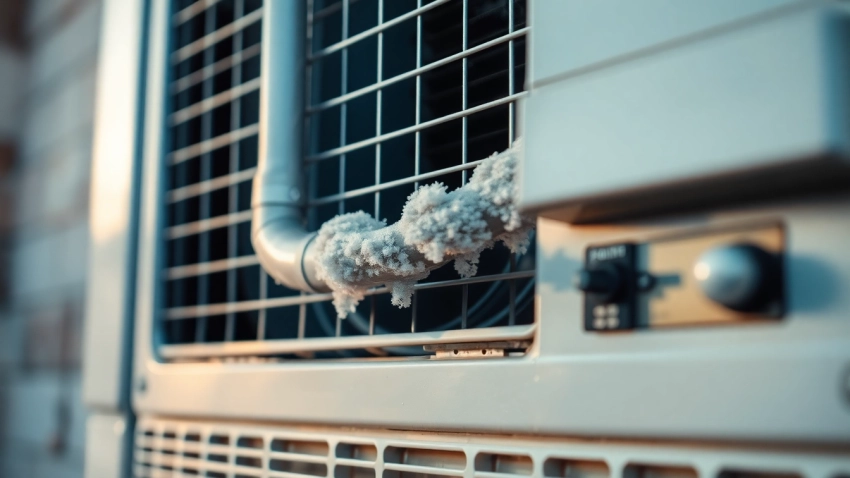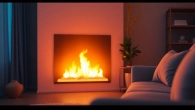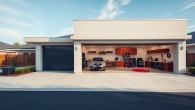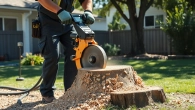
Top 5 Reasons Your Central Air Conditioner Is Not Blowing Cold Air and How to Fix It
Understanding Why Your Central Air Conditioner Is Not Blowing Cold Air
As summer approaches and temperatures soar, having a properly functioning central air conditioning unit is crucial for comfort in your home. However, it’s not uncommon for homeowners to encounter issues, including when their central air conditioner is not blowing cold air. A variety of factors can contribute to this frustrating problem. Understanding the fundamental workings of your AC system can help in diagnosing and rectifying issues as they arise.
The Role of Refrigerant in Cooling
Refrigerant is a special fluid used in air conditioning systems to absorb and release heat as it circulates. This process is essential for cooling your indoor environment. In a functioning central AC system, the refrigerant travels through a series of coils, and as it moves from the evaporator coil to the condenser coil, it changes from gas to liquid and back. If your AC is not blowing cold air, one of the primary suspects is often the refrigerant level.
Common Indicators of AC Malfunction
Identifying whether your central air conditioner is functioning correctly can save you from further complications down the line. Notable indicators include:
- Weak airflow or no air coming from vents.
- Unusual noises such as banging or hissing.
- Higher than normal energy bills due to inefficient cooling.
How Climate Affects AC Performance
Your geographic location plays a significant role in the efficiency of your AC unit. Areas with extreme heat or humidity might put additional strain on the system. Understanding how these factors interact with your air conditioner can help in making informed choices about maintenance and upgrades.
Identifying the Signs of a Refrigerant Leak
One common reason for an AC not blowing cold air is a refrigerant leak. Detecting these leaks early can prevent further damage to the unit and costly repairs.
Common Symptoms of Low Refrigerant
Low refrigerant in your central AC can manifest itself in several ways such as:
- Inconsistent temperature in different rooms.
- Longer cooling cycles that fail to adequately cool your home.
- Loud noises due to the compressor working harder than normal.
Ice Buildup: A Red Flag
One of the most apparent signs of a refrigerant issue is ice buildup on the evaporator coils. This occurs when low refrigerant levels lead to insufficient cooling, causing condensation to freeze. If you notice ice accumulating, it is crucial to address the issue immediately to prevent damage to the compressor.
How to Check Refrigerant Levels
Checking refrigerant levels typically requires professional tools and expertise. However, understanding the typical refrigerant recharge process can help you communicate effectively with your service technician. Regular maintenance checks should include refrigerant level monitoring to ensure optimal operation.
Common AC Issues That Prevent Cold Air Flow
While refrigerant issues are common, other factors can prevent your central air conditioner from blowing cold air effectively.
When Filters Are Clogged
Air filters play a critical role in the efficient operation of your AC. Clogged filters restrict airflow, leading to a drop in cooling efficiency. Homeowners should regularly check and replace filters according to the manufacturer’s recommendations—typically every one to three months.
Inspecting the Thermostat Settings
Your thermostat is the brain of your home’s cooling system. If the settings are incorrect, your AC may not cool appropriately. Ensure that your thermostat is correctly set to “cool” and that the temperature settings are lower than the current room temperature.
The Impact of Dirty Coils on Performance
Both the evaporator and condenser coils must be clean for your central AC to function correctly. Dust, debris, and dirt can accumulate on the coils, reducing their ability to absorb or dissipate heat. Regular maintenance, including cleaning the coils, can greatly enhance efficiency and lifespan.
Steps to Troubleshoot Your Central Air Conditioner
Troubleshooting your central air conditioning system requires a systematic approach, starting with basic checks before seeking professional assistance.
Safety First: Powering Down Your Unit
Before performing any troubleshooting tasks, make sure to turn off the power to your AC system. This ensures safety while you investigate the problem.
Basic Maintenance Tips
Performing some basic maintenance tasks can often help identify the problem:
- Inspect air filters and replace them if they are dirty.
- Ensure the outdoor unit is clear of debris and vegetation.
- Check the circuit breaker to ensure the AC unit is receiving power.
When to Call a Professional
If you’re unable to identify or resolve the issue, it’s time to call in HVAC professionals. They have the training, tools, and expertise to diagnose complex problems that may not be immediately apparent.
Long-Term Solutions for Reliable Cooling
In addition to troubleshooting, implementing long-term solutions can help maintain your central air conditioning system’s performance.
Regular Maintenance Best Practices
To keep your HVAC system operating efficiently, adhere to a routine maintenance schedule that includes:
- Annual professional inspections.
- Regular filter replacements.
- Cleaning and servicing the outdoor unit.
Upgrading Your System for Better Efficiency
If your system is over ten years old and frequently has issues, consider investing in a new unit. Modern systems are significantly more energy-efficient and can save you money on utility bills over time.
Understanding your Home’s Air Flow Needs
Every home has unique airflow requirements based on its size, layout, and insulation. Working with an HVAC professional to assess your home can ensure you’re making the best choices for comfort and efficiency.












Leave a Reply